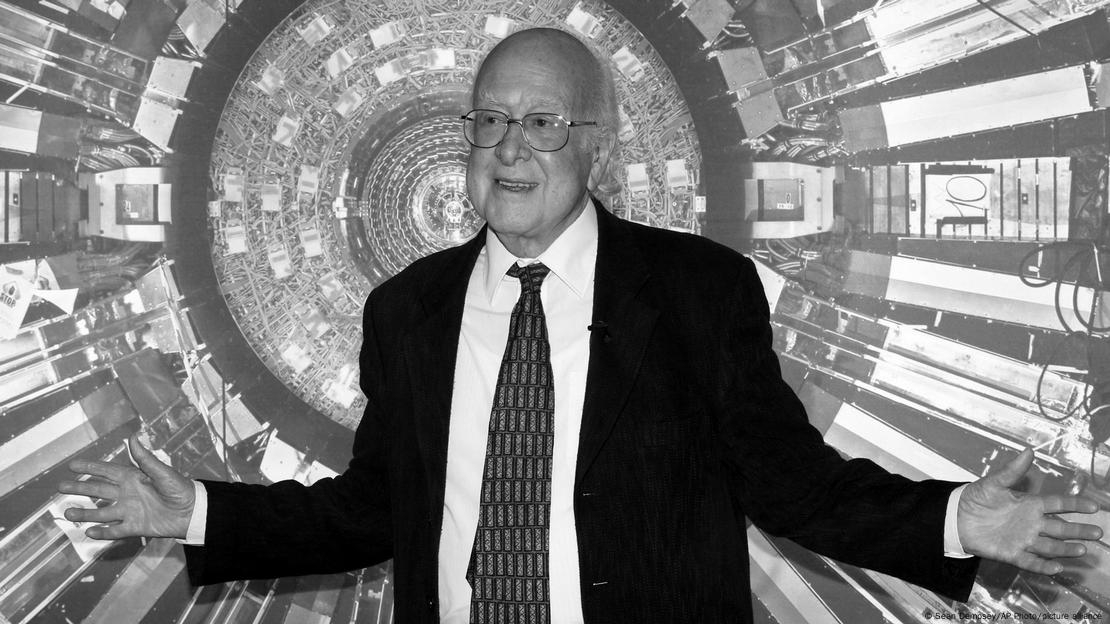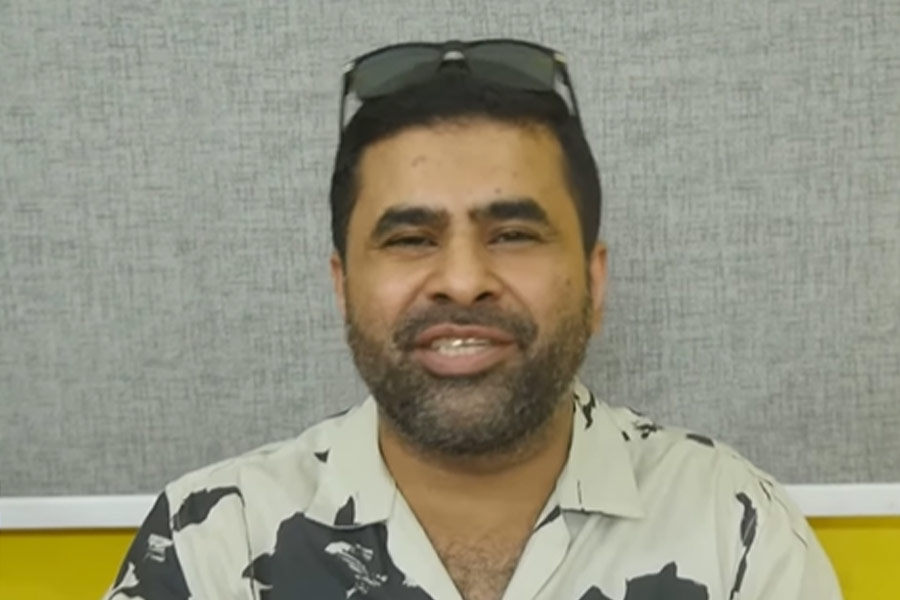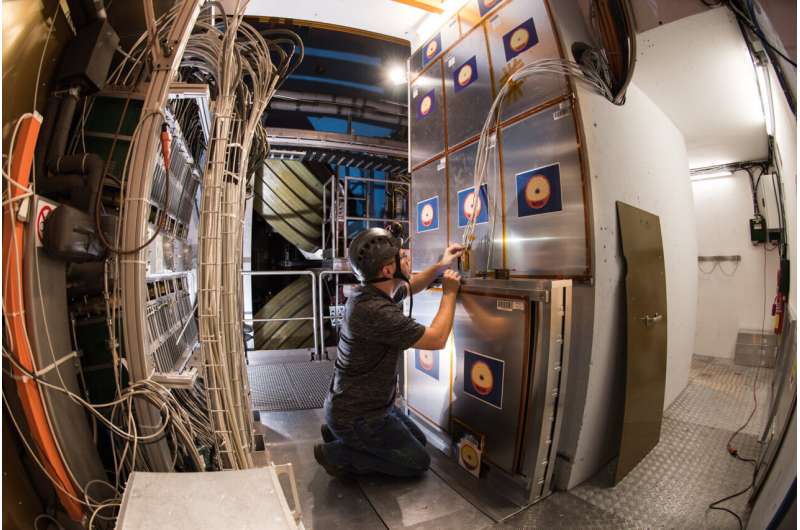CERN has been an epicenter of scientific breakthroughs since 1954, including the discovery of the Higgs boson.
The European Organization for Nuclear Research — better known as CERN — is a place of scientific breakthroughs.
Since 1954, thousands of the world's best scientists and emerging minds have converged on Switzerland to explore how the universe works. On September 29, CERN will celebrate its 70th anniversary.
CERN has been the seat of some of the most important discoveries in science — from the confirmation of the elusive Higgs boson in 2012, to more practical innovations like the invention of the World Wide Web.
The Large Hadron Collider
CERN is perhaps best known for its extensive underground particle accelerator known as the Large Hadron Collider (LHC) — a 27-kilometer-long (16-miles-long) tube built beneath the Swiss and French borderlands near Geneva.
Scientists have been accelerating particles around the LHC since September 2008.
The LHC works by sending separate, highly energized particle beams in opposite directions through the 27-kilometer-long tubular vacuum.
The particle beams consist of a type of particle called protons, which are guided by superconducting electromagnets, making them collide at almost the speed of light.
The particles are so tiny that the task of making them collide is like firing two needles 10 kilometers at each other with the precision to make them collide.
When the particles collide, they produce energy that is used to create new particles.
The LHC is one of 11 other particle accelerators based at CERN. Researchers use them to help advance a range of technologies, including some that impact our daily lives.
Their research has helped construct more powerful computers and microchips, improve the quality of technology used in healthcare, energy and space exploration.
Higgs boson breakthrough in 2012
At the top of CERN's agenda using the LHC was the ambition to find the Higgs boson particle.
The Higgs boson is a type of particle named after Nobel Prize physicist Peter Higgs. Higgs believed the particle created a field which fills the entire universe and gives other particles their mass.
In 2012, after decades of research, scientists at CERN finally found proof of Higgs' theory — they had found a Higgs boson.
It was a colossal scientific breakthrough that opened a whole new field of particle physics research and helped explain why particles bunched together at the formation of the universe.
CERN aren't trying to create black holes
Prior to the LHC being switched on, there were concerns that smashing protons together at sub-light speed would lead to the formation of tiny black holes.
We think of black holes forming only when massive stars implode, but some theories suggest that tiny, quantum black holes can form when particles collide.
These tiny black holes are nothing like the black holes that suck matter inside them in space. They would only last for fractions of a second and be completely safe.
In fact, CERN researchers might like the formation of such a theoretical black hole inside a particle accelerator. It would give them an opportunity to see how gravity behaves on a quantum scale.

What's next for CERN?
Scientists aren't finished with CERN's LHC. Beyond the discovery of the Higgs bosons, there are many other fundamental, unanswered questions about the universe.
They are developing a second-generation High Luminosity LHC. The upgrade will enable them to increase the number of proton collisions in the LHC to be at least five times.
This "LH-LHC" will likely be operational around 2041. Scientists aim to perform detailed studies of Higgs bosons by generating at least 15 million of the particles each year.
With the use of upgraded technology to generate more particles (and collisions), CERN hopes it will learn more about the once elusive Higgs boson, and discover new particles as yet unknown to science.
Edited by: Fred Schwaller
Mysteries of universe revealed? Hardly. CERN still fascinates on its 70th anniversary
The scientific center that is home to the world’s largest particle accelerator and is billed as the world’s biggest machine is celebrating its 70th anniversary
ByJAMEY KEATEN
October 1, 2024
GENEVA -- The research center that is home to the world’s largest particle accelerator is celebrating its 70th anniversary on Tuesday, with the physicists who run it aiming to unlock secrets about dark matter and other mysteries to promote science for peace in today's conflict-darkened world.
Over the last seven decades, CERN, the sprawling research center on the Swiss-French border at Geneva, has become a household name in Europe, the West and beyond, but its complex inner workings remain a puzzle to many people.
Here's a look at CERN and how its discoveries have changed the world and our view of the universe — and could change them more in coming years.
The European Organization for Nuclear Research, which has retained the French-language acronym CERN for its predecessor outfit, had its origins in a 1951 meeting of the U.N.’s scientific organization that sought to build a state-of-the-art physics research facility in Europe and ease a brain drain toward America after World War II. Groundbreaking was on May 17, 1954.
Today, for cognoscenti, CERN is probably best known as home to the Large Hadron Collider, trumpeted as the world’s biggest machine, which powers a network of magnets to accelerate particles through a 27-kilometer (17-mile) underground loop in and around Geneva and slam them together at velocities approaching the speed of light.
By capturing and interpreting the results of the collisions — as many as a billion per second — of such beams of particles, thousands of scientists both on hand at the center and remotely around the world pore over the reams of resulting data and strive to explain how fundamental physics works.
CERN says collisions inside the LHC generate temperatures more than 100,000 times hotter than the core of the sun, on a small scale and in its controlled environment.
At the collider, “every day we are able to reproduce the conditions of the primordial universe as they were a millionth of a millionth of a second after the Big Bang. Yet, many open, crucial questions remain,” CERN Director-General Fabiola Gianotti told an anniversary celebration attended by many leaders of its 24 member countries.
Over the years, CERN and its experimental facilities have grown into a vast research hub with applications in many scientific fields and industries.
“In a world where conflicts between countries, religions and cultures sadly persist, this is a truly precious gift which cannot be taken for granted,” Gianotti said.
Experiments in the collider helped confirm in 2012 the subatomic Higgs boson, an infinitesimal particle whose existence had been theorized decades earlier and whose confirmation completed the Standard Model of particle physics.
CERN is also where the World Wide Web was born, in the mind of British scientist Tim Berners-Lee 35 years ago, as a way to help universities and institutes share information. In 1993, the software behind the web was put into the public domain — and the rest is history, in smartphones and on computers worldwide.
The spillover science and tools generated at CERN have rippled through the world economy. Thousands of smaller particle accelerators operate around the world today, plumbing applications in fields as diverse as medicine and computer chip manufacturing.
Crystals developed for CERN experiments roughly four decades ago are now widely used in PET scanners that can detect early signs of health troubles like cancer and heart disease.
“It is thanks to CERN that we have touch screens. It is thanks to CERN that we have new tools for fighting cancer," European Union chief Ursula von der Leyen said at the anniversary celebration. “You are constantly working with European industries to build low-emission airplanes, or to create new solutions to transport liquid hydrogen.”
"CERN is the living proof that science fosters innovation and that innovation fosters competitiveness,” von der Leyen said, adding that she wanted to increase spending for research in the next EU budget.
Some skeptics have over the years stirred fears about CERN. Insiders variously argue and explain that such fears are overblown or inaccurate, and CERN has issued its own retort to some of the theories out there.
For the most part, CERN technicians, researchers and theoreticians of more than 110 nationalities today carry out new experiments that aim to punch holes in the Standard Model — smashing up conventional understandings to move science forward — and explain a long list of lingering scientific unknowns.
Its scientific whizzes hope to solve riddles about dark energy — which makes up about 68% of the universe and has a role in speeding up its expansion — and test hypotheses about dark matter, whose existence is only inferred and which appears to outweigh visible matter nearly six-to-one, making up slightly more than a quarter of the universe.
CERN has two big projects on its horizon. The first is the High-Luminosity LHC project that aims to ramp up the number of collisions — and thus the potential for new discoveries — starting in 2029.
The second, over the much longer term, is the Future Circular Collider, which is estimated to cost 15 billion Swiss francs (about 16 billion euros or $17.2 billion) and is hoped to start operating in an initial phase by 2040.
Despite its aim to foster scientific progress in the cause of peace and humanity, CERN has found itself ensnared in politics.
Its constitution says the organization “shall have no concern with work for military requirements.” In 2022, CERN's governing council voted to pause ties with institutes in Russia because of President Vladimir Putin’s order for Russian troops to invade Ukraine earlier that year. Some fear that applications from CERN's research could make their way into Moscow's war machine.
On Nov. 30, CERN will formally exclude Russia — affecting some 500 scientists, about 100 of whom have joined non-Russian institutes in order to maintain their research with the center.
The suspension will come at a cost, depriving CERN of some 40 million Swiss francs in Russian financing for the High-Luminosity LHC. It amounts to about 4.5% of the budget for its experiment, which will now have to be shouldered by other CERN participants.
CERN counts 19 European Union countries plus Britain, Israel, Norway, Serbia and Switzerland as members, while the United States and Japan — plus the EU and the U.N. educational, scientific and cultural organization — have observer status. Russia and a Russia-based nuclear research institute had their observer status suspended in 2022.


